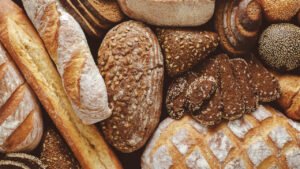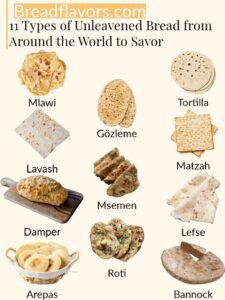This post may contain affiliate links. Read our disclosure policy.
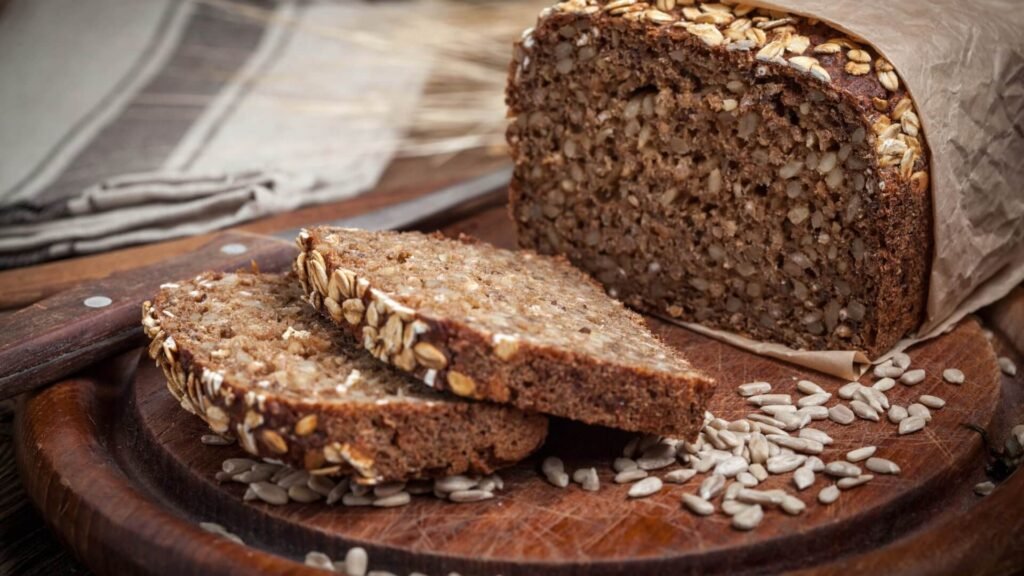
You’ve probably seen dark, dense loaves of rye bread at the grocery store or bakery. But do you know what is rye bread, where it comes from, how is it made, and what does it taste like? Whatever your question about this bread, the answer is here. In this article, you will learn the 13 most important things you need to know about rye bread and why it is different from ordinary white and whole wheat bread.
What is Rye Bread?
Rye bread is made from a type of flour ground from rye grains, which gives it a unique earthy flavor that pairs well with both sweet and savory dishes. It tends to be darker in color than wheat bread which can be dark or light depending on the type of flour and ingredients used in the dough. Its nutritional value makes it one of the healthiest breads as well as many people love its crumbly texture that goes well with strong flavors.
Origin of Rye Bread
Rye bread has been around for centuries, likely originating in prehistoric Southwest Asia before the rye kernels migrated across the Balkan Peninsula and spread to European countries. The availability of rye flour in across Europe led to the development of rye bread recipes that relied on locally available ingredients. During the 19th century, German immigrants brought their beloved pumpernickel and sourdough rye, and Russian Jews introduced lighter seeded ryes to the United States. This influx of cultures led to the creation of modern American rye bread into the delicious loaves we enjoy today.
Varieties of Rye Bread
Rye bread comes in a variety of forms depending on the ingredients used, including:
Light Rye Bread

Lighter in color than other rye bread and made from white rye flour, which contains only the starch endosperm without the bran and germ. If you want to eat rye bread with a less acidic taste, light rye bread is a good choice.
Dark Rye Bread
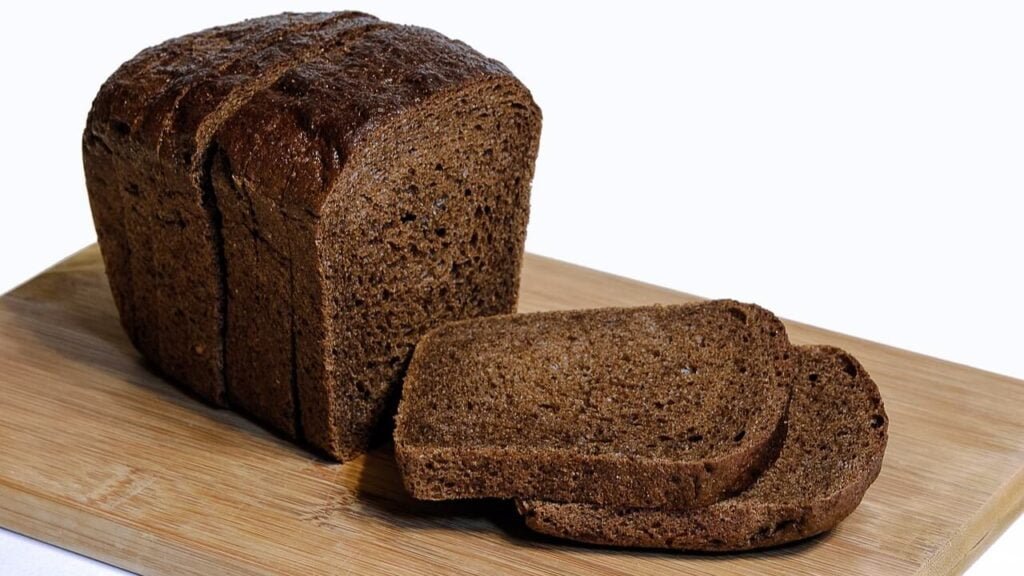
Dark rye bread gets its dark color from the addition of ingredients such as cocoa, molasses, or coffee or the use of dark rye flour. This variety of rye bread pairs well with hearty soups, stews, and smoked meats.
Marbled Rye Bread
Usually associated with Jewish cuisine and made from light and dark dough rolled together. The end result is a loaf of bread with an attractive marbled appearance and a nutty, earthy flavor.
Pumpernickel Bread
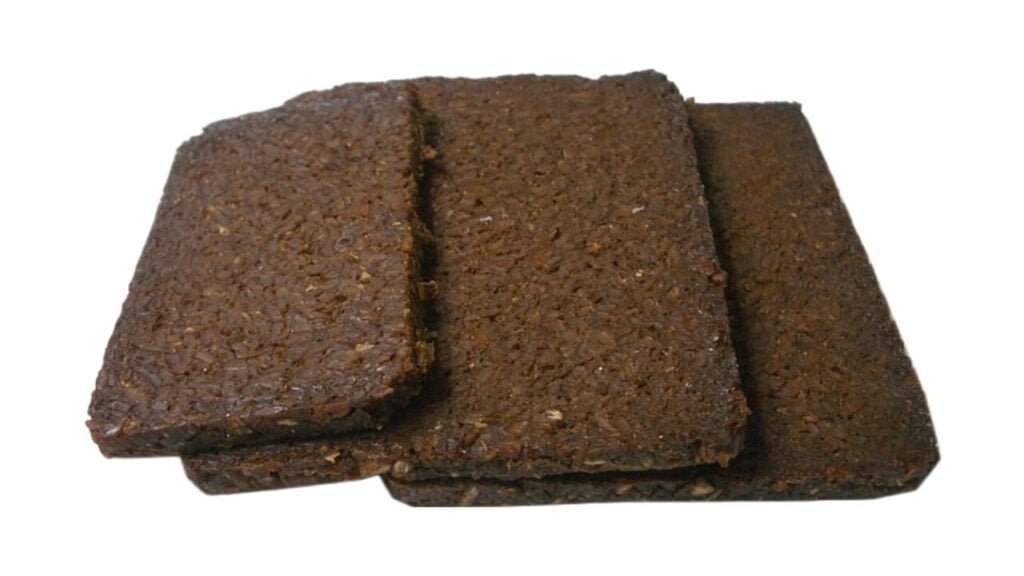
A German sourdough rye bread, typically made with ground whole rye grains, or a combination of rye flour and whole rye grains. Pumpernickel bread has an earthy, sweet flavor that is perfect with hard cheeses and salty foods.
Related: What is Pumpernickel?
What Does Rye Bread Taste Like?
Rye bread has an earthy, nutty, mild flavor that’s more robust than other types of bread made from white wheat flour. However, the taste may vary depending on the type of rye bread. Rye sandwich bread tends to be more complex than white bread, but still has some whole-grain flavor, while pumpernickel has an earthy, slightly sweet flavor.
What is Jewish Rye Bread?
A staple of Jewish cuisine, with many varieties around the world, but all are generally made with a mixture of rye and wheat flour, caraway seeds, and washed with egg. The rye flour gives the bread a dark, dense crumb, while the caraway adds an aromatic, nutty flavor. Jewish rye bread gets its tangy, sour flavor from the sourdough starter, which goes perfectly with cured meats such as pastrami and makes it a longer shelf life than regular bread.
What is Marble Rye Bread?
A specialty rye bread that features dark swirls of dark rye flour mixed into a lighter rye bread dough. As the bread bakes, the light and dark rye dough batters remain separate, creating an eye-catching marbled effect in the finished loaf. Marbled Rye Bread has a distinctly tangy flavor, with a slightly chewy texture that goes well with any full-flavored sandwich.
What’s the Difference between Rye and White Bread?
Compared to white bread, rye bread is a healthier option due to its less processed flour, which retains more nutrients such as fiber, magnesium, and B vitamins. It gets its hearty, nutty flavor and distinctive dark color from the bran of rye grain, which also makes it more satiating. White bread, on the other hand, is made from wheat flour that has been stripped of its bran and germ, removing much of its nutritional value and giving it a lighter texture.
What’s the Difference between Rye and Whole Wheat Bread?
Whole wheat and rye bread may seem similar, but there are some key differences. Rye bread is made from rye flour, which is milled from rye grain and has an earthy, tangy flavor, while whole wheat bread is made from whole wheat flour, which has a slightly nutty flavor. Both are high in fiber and B vitamins, but rye bread contains more magnesium, potassium, and phosphorus, and tends to be denser and darker in color due to the whole grain rye.
What’s the Difference between Rye and Pumpernickel Bread?
Pumpernickel and rye bread are often confused. However, there are some important differences. Pumpernickel bread is made from ground whole rye grains and contains molasses, giving it a dark brown color and sweet flavor, while rye bread tends to be lighter in density and color than pumpernickel. Whichever you prefer, both rye bread and pumpernickel are delicious and can be part of a healthy diet, providing fiber, vitamins, and minerals.
Is Rye Bread Gluten Free?
No, rye bread is not gluten-free. While all rye flours contains less gluten than other types of flour, it is still unsafe for those with celiac disease or gluten sensitivity. If you want to taste rye bread and avoid gluten, look for bread made using buckwheat flour and caraway powder, as it will taste similar to rye bread without any gluten.
Is Rye Bread Good for You?
Rye is one of the healthiest bread you can eat and can definitely be part of a healthy diet. Rye flour, which rye bread is made from, is a whole grain that is higher in fiber, B vitamins, and minerals such as manganese, selenium, phosphorus, iron, and zinc. As a result, it can improve digestion, lower cholesterol, and act as an antioxidant. So if you’re looking for healthy, nutritious bread, pure rye bread is an excellent choice compared to wheat bread. Just be sure to choose bread made with traditional ingredients and minimal added sugar, and watch your portion sizes.
What is the Best Way to Eat Rye Bread?
With its hearty, robust flavor, rye bread pairs well with many recipes. Some classic things to make include:
Reuben Sandwich
When it comes to making a Reuben sandwich, rye bread is essential for an authentic sandwich like the Russian dressing. Layer corned beef, sauerkraut, Swiss cheese, and Russian dressing on rye loaves and grill until crisp and cheese is melted, and taste the magic.
Grilled Cheese
Rye bread gives grilled cheese an earthy, slightly tangy flavor making it one of the best bread for grilled cheese. Its crumb holds up well to the grill heat and gives a crunchy exterior and a chewy interior. Look for hard cheese like Parmesan and Parmigiano-Reggiano, both of which pair well with rye bread.
Patty Melt
Nothing beats a classic patty melt, especially when made with brown bread, which elevates it to new heights. Rye bread adds a tangy flavor that pairs perfectly with ground beef, onions, and melted cheese, making it one of the ideal comforting sandwiches for lunch or dinner.
French Toast
French toast made with rye bread is fantastic and can be served for breakfast, brunch, or a delicious dessert. Rye with caraway absorbs the egg and retains its flavor, while the caraway seeds in the bread remain crunchy, providing a wonderful combination.
How to Store Rye Bread?
To keep your rye bread fresh for as long as possible, store it at room temperature in a bread bag or bread container, this will keep out air and moisture that can cause mold. For best quality, consume rye bread within 4 to 5 days. For longer-term storage, you can keep rye bread in the refrigerator for 7 to 10 days. The cold temperature will slow down mold growth. You can also freeze rye bread in an airtight freezer bag or container for up to 3 months. When you’re ready to eat, revive the frozen rye bread by sprinkling it with water and reheating it in a 300°F oven for 5 to 10 minutes.

